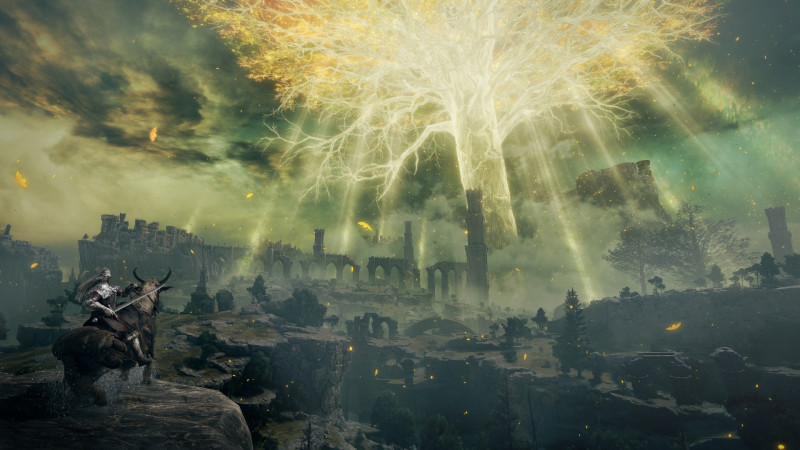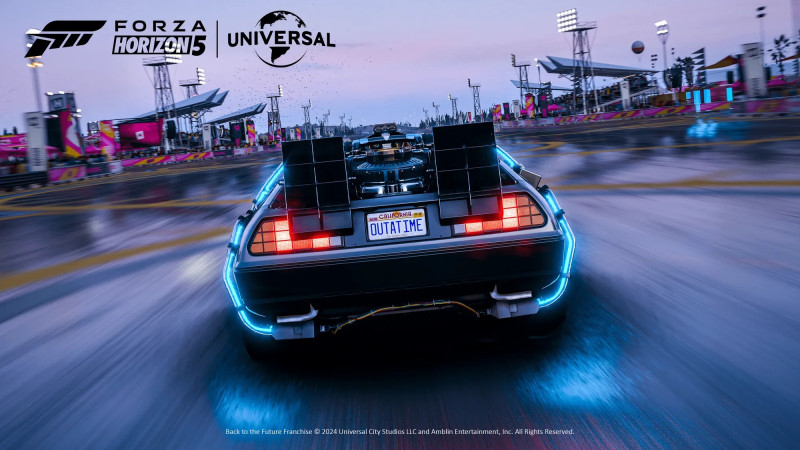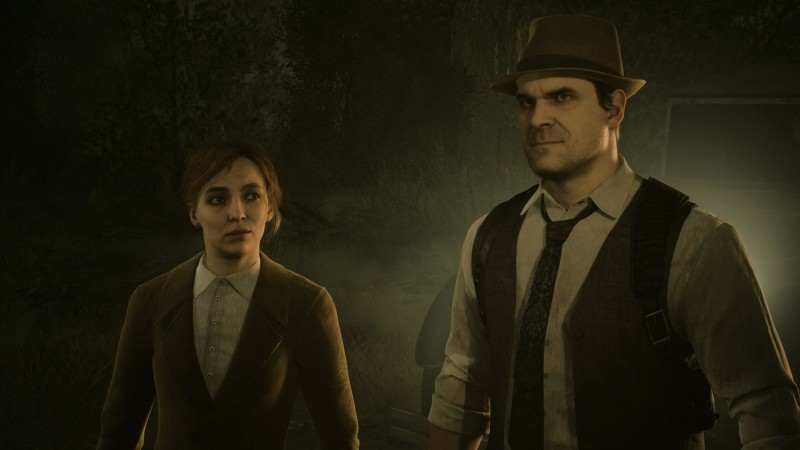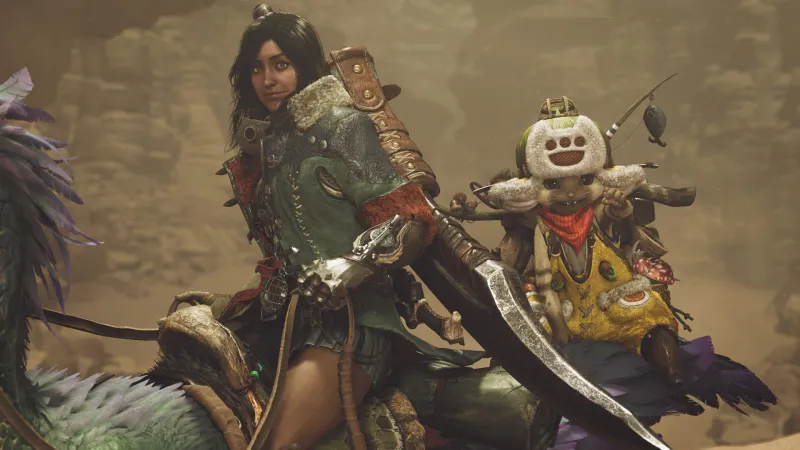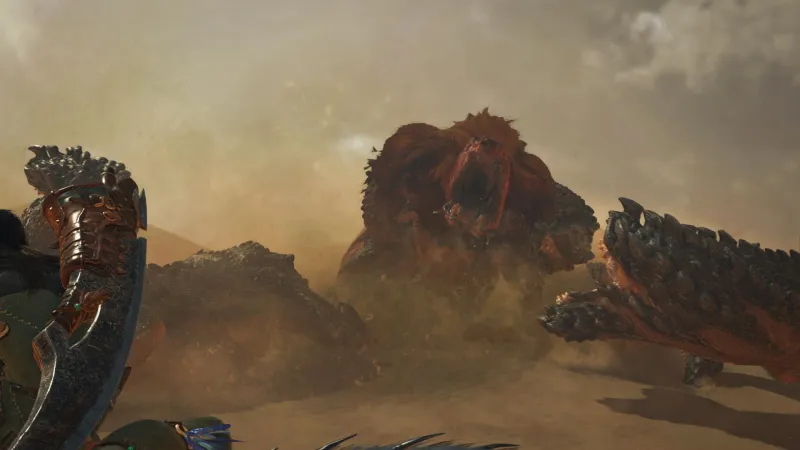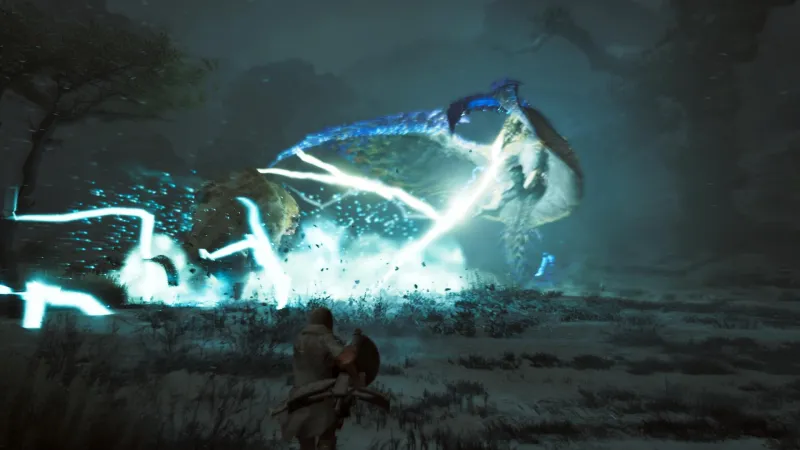If you’re at all familiar with the Dragon Age series, you likely already know BioWare has experimented quite a lot with its gameplay. From Dragon Age: Origins’ real-time strategy RPG approach to Dragon Age II’s mostly-set-within-one-city action experience to Dragon Age: Inquisition’s strategy-action mix, BioWare hasn’t quite defined the franchise’s combat. However, a through-line is apparent from Origins to Inquisition: BioWare seemingly wants this franchise to be action but has attempted to shift to that without abandoning its longtime fans.
With Dragon Age: The Veilguard, BioWare has completed its transition from strategy to real-time action, but thanks to an optional tactical pause-and-play combat wheel that harkens back to the series’ origins, I feel it’s found a great (battle)ground for Dragon Age combat. Of course, it’s hard to tell how Veilguard’s action will hold up over what is sure to be a dozens-of-hours-long RPG, but if what I’ve seen so far is any indication, the studio is on to something.
A Shift In Strategy
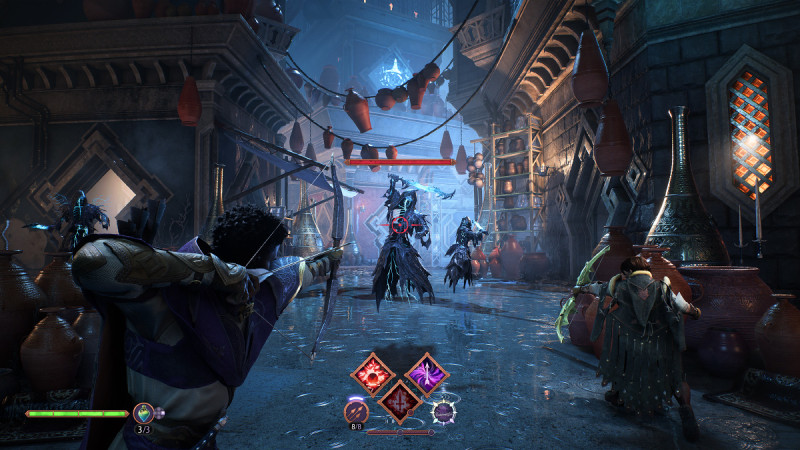
“I think the first thing to keep in mind is that combat […] in the franchise has been an evolution,” game director Corinne Busche tells me within BioWare’s Edmonton office. “Every single entry reimagines what combat is like and I would say our goal was to make sure we had a system that allowed players to feel like they actually were able to step into the world of Thedas. They’re not a player observing from afar – they are inside of this world. Being this authentic world that’s brought to life, the combat system needs to support that, so you are in control of every single action, every block, every dodge, every swing of your sword.”
Busche says players complete every swing in real-time, with particular attention paid to animation swing-through and canceling. On the topic of canceling, I watch Busche “bookmark” combos with a quick dash. With this mechanic, players can pause a combo’s status with a dash to safety and continue the combo where they left off afterward. Alongside the dash, there’s a parry for some classes, the ability to charge moves, and a revamped healing system that allows players to quickly use potions by pressing right on the d-pad.
Busche says each character will play the same in a way, regardless of class, in that you execute light and heavy attacks with the same buttons, use abilities with the same buttons, and interact with the combo wheel in the same way. During my demo at one point, we use a sword-and-shield Warrior Qunari that hip-fires and aims their shield to throw it like Captain America while hammering down big damage with a sword. Pressing the same buttons as a mage might throw out magical ranged attacks instead of a shield.
[embedded content]
Abilities, like a Spartan-like kick from a Warrior or a Mage’s firewall that deals continuous damage, add to the player’s repertoire of combat options. Warriors can parry incoming attacks, staggering enemies in the process. Rogues have a larger parry window, and Mages can’t parry at all but instead throw up a shield that blocks all incoming damage so long as they have the mana to sustain the shield.
“That is just the baseline that allows us to get that level of immersion of, ‘I’m actually in this world; I’m a part of it,'” Busche says. “But again, the abilities, the strategy, linking my companions’ abilities together to perform devastating combos, that is really where the depth and the complexity comes into play.”
Abilities And The Skill Tree
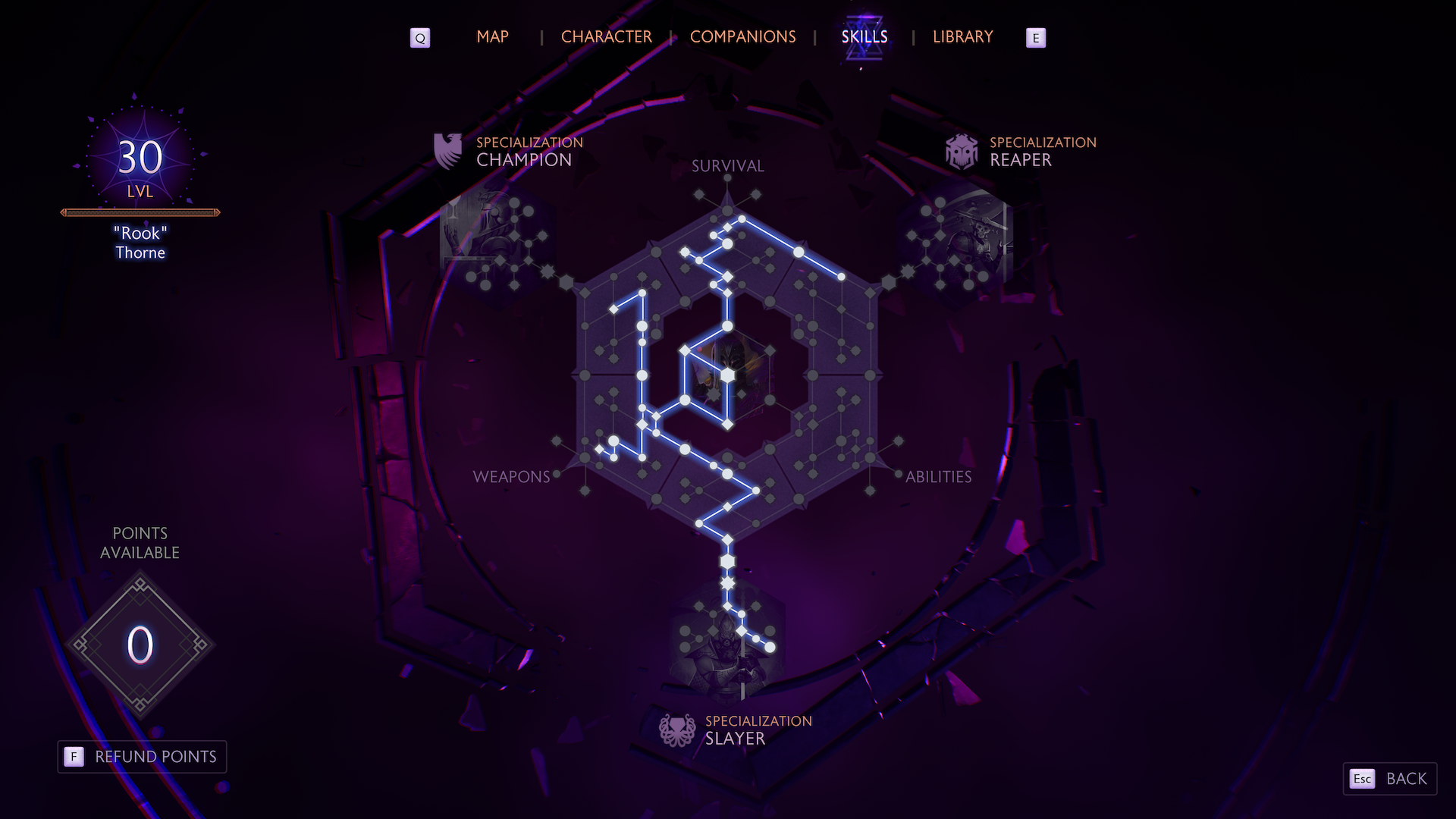
Warrior Rook Skill Tree
This extends to companions, who, at your choosing, bring three abilities (of their five total) into combat, executed either with quick select buttons or the pause-and-play combat wheel. Every time you rank up a companion’s Relationship Level, you unlock a skill point to spend specifically on that companion – this is how you unlock new combat abilities.
Though companion skill trees pale in comparison to Rook’s expansive tree, which features passive abilities, combat abilities, and more, as well as paths to three unique class specializations, there’s still some customization here.
You can find the skill tree for Rook and companions within Veilguard’s start or pause menu. This menu contains pages for Veilguard’s map, journal, character sheets, and a library for lore information, too. Here, you can cross-compare equipment and equip new gear for Rook and companions, build weapon loadouts, and customize your abilities and builds via the aforementioned skill tree, which looks relatively easy to understand.
You won’t find minutiae here, “just real numbers,” Busche says. In other words, a new unlocked trait might increase damage by 25% against armor, but that’s as in-depth as the numbers get. Passive abilities unlock jump attacks and guarantee critical hit opportunities, while abilities add moves like firewall and spartan kicks to your arsenal. As you spec out this skill tree, which is 100% bespoke to each class, you’ll work closer to unlocking a specialization (which doesn’t take reaching the max level of 50). Every class has three specializations, each with a unique ultimate ability. Busche says BioWare’s philosophy with the skill tree is “about changing the way you play, not the statistical minutiae.”
Companions In Combat
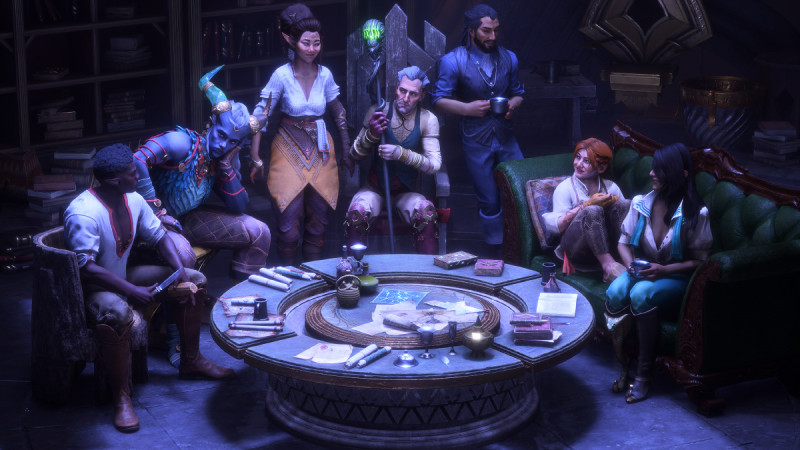
If you completely ignore companions in combat, they will attack targets, use abilities, and defeat enemies all on their own. “[Companions] are their own people, “Busche says. “They have their own behaviors, they have their own autonomy on the battlefield, they’ll pick their own targets. As their plots progress, they’ll learn how to use their abilities more competently, and it really feels like you’re fighting alongside these realized characters in battle.”
Speaking to companion synergy, Busche adds, “I see all the abilities Harding has, and I see everything that Bellara is capable of. And sometimes, I’m using vulnerabilities synergistically. Maybe I’m pausing or slowing time with Bellara so that I can unleash devastating attacks with Harding, knocking down the enemy, and then me, as Rook, I’m rushing in and capitalizing on this setup they’ve created for me. It is a game about creating this organic sense of teamwork.”
Busche says there are more explicit synergies, with intentional combos where specific companions can play off each other, and you can queue up their abilities to do just that. That’s what the pause-and-play combat wheel is for in Veilguard.
In this screen, which pauses the camera and pulls up a flashy combat wheel that highlights you and your companions’ skills, you can choose abilities, queue them up, and strategize with synergies and combos the game recognizes, all while targeting specific enemies. Select what you want and release the wheel to watch your selections play out.
Putting It All Together
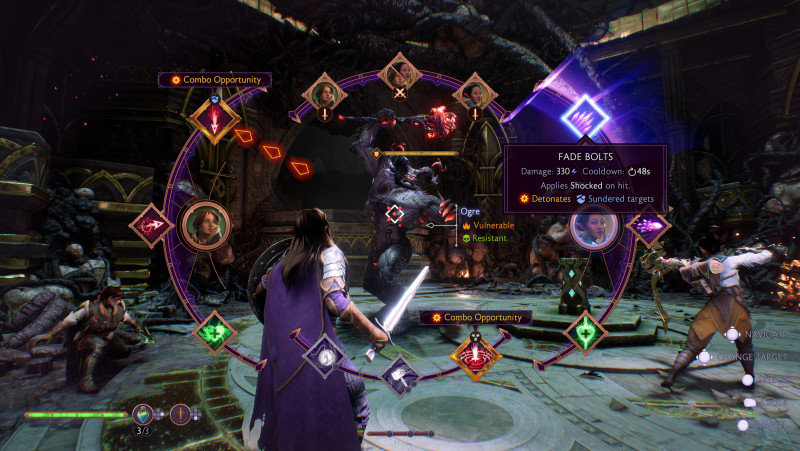
During a mission within Arlathan Forest after Veilguard’s prologue, Busche utilizes Veilguard’s dual-loadout mechanic. As Rook, you can create two weapon loadouts for quick switch-ups mid-combat. As a mage Rook, she uses magical attacks to add three stacks of arcane build-up to make an Arcane Bomb on a Sentinel, a mechanical set of armor possessed by a demon. If you hit the Sentinel’s Arcane Bomb with a heavy attack, the enemy will take devastating damage. Once the Sentinel has an Arcane Bomb on it, Busche begins charging a heavy attack on her magical staff, then switches to magical daggers in Rook’s second loadout, accessed with a quick tap of down on the d-pad to unleash some quick light attacks, then back to the staff to finish charging its attack. She then unleashes the heavy attack, and the Arcane Bomb explodes in a liquidy whirl of green magic.
“I’ve seen [Veilguard’s combat] refined over time [and] I love it,” BioWare general manager Gary McKay tells me. “I love that balance of real-time fluid action, but also the ability to have the depth in the RPG, not just in terms of pause-and-play, but the depth in terms of how you bring your companions into the battlefield. What are you going to do with their skill points? What’s the loadout you’re going to use? Everything is about bringing Rook to the center of the battlefield, and I love it.”
Former Dragon Age executive producer and Veilguard consultant Mark Darrah feels Veilguard is the first game where the combat is legitimately fun. “What I see in Veilguard is a game that finally bridges the gap,” he says. “Uncharitably, previous Dragon Age games got to the realm of ‘combat wasn’t too bad.’ In this game, the combat’s actually fun, but it does keep that thread that’s always been there. You have the focus on Rook, on your character, but still have that control and character coming into the combat experience from the other people in your party.”
I get the sense from watching Busche play several hours of Veilguard that BioWare has designed a combat system that relies heavily on players extracting what they want out of it. If you want to button mash and use abilities freely when their cooldowns expire, you can probably progress fine (although on the game’s easier difficulties). But if you want to strategize your combos, take advantage of elemental vulnerabilities, and min-max companions and Rook loadouts, you can do that, too, and I think you’ll find Veilguard rewards that with a more enriching experience.
For more about the game, including exclusive details, interviews, video features, and more, click the Dragon Age: The Veilguard hub button below.



